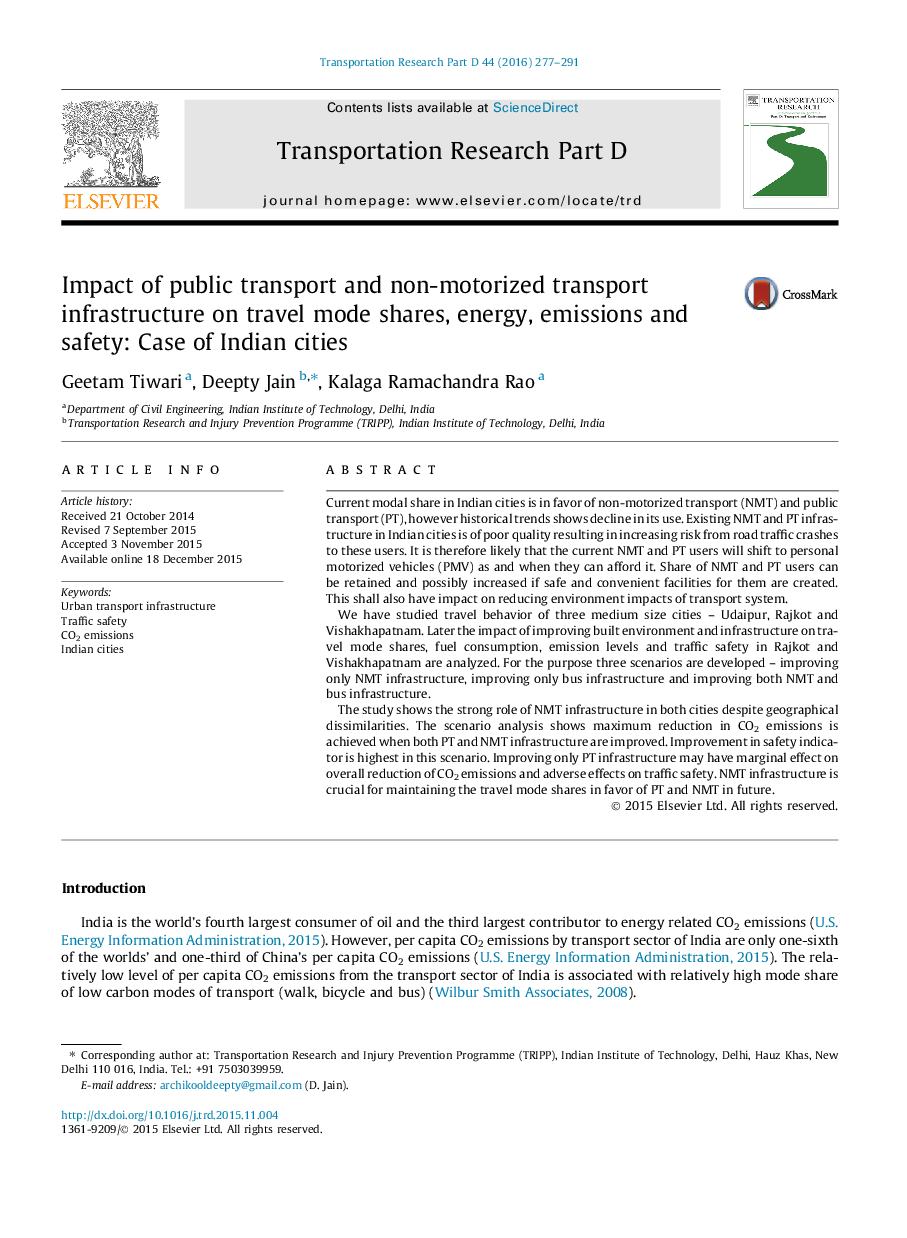| کد مقاله | کد نشریه | سال انتشار | مقاله انگلیسی | نسخه تمام متن |
|---|---|---|---|---|
| 1065662 | 1485879 | 2016 | 15 صفحه PDF | دانلود رایگان |
• Improved NMT infrastructure in cities results in maximum reduction in CO2 emissions.
• NMT infrastructure along with public transport is essential to improve traffic safety.
• Improved bus infrastructure is likely to cause MTW and IPT users to shift to bus.
Current modal share in Indian cities is in favor of non-motorized transport (NMT) and public transport (PT), however historical trends shows decline in its use. Existing NMT and PT infrastructure in Indian cities is of poor quality resulting in increasing risk from road traffic crashes to these users. It is therefore likely that the current NMT and PT users will shift to personal motorized vehicles (PMV) as and when they can afford it. Share of NMT and PT users can be retained and possibly increased if safe and convenient facilities for them are created. This shall also have impact on reducing environment impacts of transport system.We have studied travel behavior of three medium size cities – Udaipur, Rajkot and Vishakhapatnam. Later the impact of improving built environment and infrastructure on travel mode shares, fuel consumption, emission levels and traffic safety in Rajkot and Vishakhapatnam are analyzed. For the purpose three scenarios are developed – improving only NMT infrastructure, improving only bus infrastructure and improving both NMT and bus infrastructure.The study shows the strong role of NMT infrastructure in both cities despite geographical dissimilarities. The scenario analysis shows maximum reduction in CO2 emissions is achieved when both PT and NMT infrastructure are improved. Improvement in safety indicator is highest in this scenario. Improving only PT infrastructure may have marginal effect on overall reduction of CO2 emissions and adverse effects on traffic safety. NMT infrastructure is crucial for maintaining the travel mode shares in favor of PT and NMT in future.
Journal: Transportation Research Part D: Transport and Environment - Volume 44, May 2016, Pages 277–291
